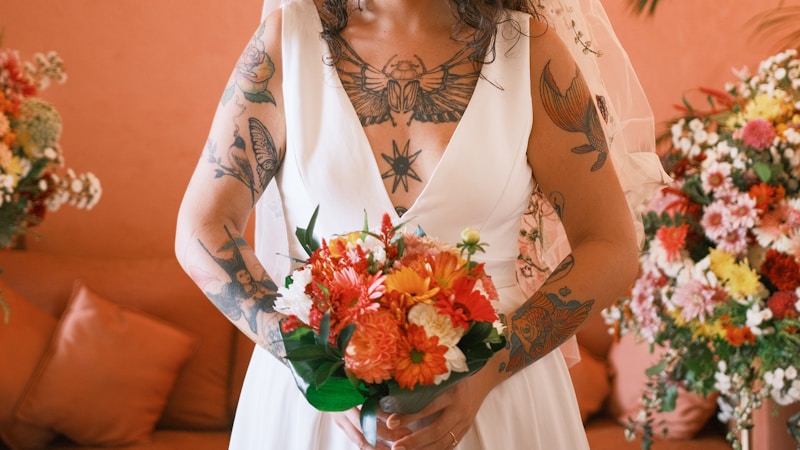The Influence of Art Movements on Wedding Couture: A Timeless Blend of Style and Emotion
The Influence of Art Movements on Wedding Couture: A Timeless Blend of Style and Emotion
Understanding Wedding Couture through the Lens of Art Movements
When it comes to wedding couture, the artistic elements that define this realm are often influenced by various art movements throughout history. From the opulence of Baroque to the fluid lines of Art Nouveau, wedding fashion has continuously evolved, drawing inspiration from the aesthetics and philosophies of these cultural trends. In this article, we will explore how different art movements have impacted wedding couture, providing you with a deeper understanding of the styles available today.
The Intersection of Art and Fashion
The relationship between art and fashion is long-standing and undeniably influential. Wedding couture merges these two worlds, showcasing not just the beauty of the garments but also the artistic narratives and emotional layers behind them. Designers often look to pioneering artistic movements to shape their collections, adding value and depth to the garments they create. Let’s delve into some key art movements and their impact on wedding fashion.
1. Romanticism: The Euphoria of Love
The Romanticism movement, characterized by its emphasis on emotion and individualism, plays a pivotal role in wedding couture. This movement celebrates the beauty of nature, love, and passion—qualities embodied in the soft, flowing lines and intricate details of wedding dresses. Fabrics like chiffon, lace, and silk reflect the ethereal essence of Romanticism.

| Characteristics of Romantic Wedding Couture |
| Soft and flowing fabrics |
| Intricate lacework |
| Emphasis on natural beauty |
| Use of floral patterns and motifs |
2. Art Nouveau: Fluidity and Nature
Originating in the late 19th and early 20th centuries, the Art Nouveau movement is known for its organic shapes and delicate, flowing lines. Wedding gowns inspired by this style often feature graceful silhouettes adorned with nature-inspired elements, such as floral appliqués and sinuous designs. Art Nouveau captures the harmony of nature and human craftsmanship, emphasizing the beauty of the natural world.
3. The Modernist Movement: Minimalism and Functionality
As we moved into the 20th century, the Modernist movement began to redefine aesthetics. In wedding couture, this translates to cleaner lines, streamlined silhouettes, and a focus on functionality without the excess of embellishments. Modernist-inspired wedding gowns often feature architectural elements, allowing the bride's natural beauty to shine through while still making a bold statement.
| Example of Modernist Wedding Couture Elements |
| Structured, geometric designs |
| Neutral color palettes |
| Focus on fit and craftsmanship |
| Minimal embellishment |
4. Postmodernism: Breaking Traditions
Postmodernism shook the foundations of both art and fashion, encouraging experimentation and the mixing of styles. In wedding couture, this translates to traditional and non-traditional elements coexisting in a single gown. For example, a bride might choose a vintage lace bodice paired with a contemporary tulle skirt, symbolizing the blend of historical influences with modern aesthetics.
Current Trends in Wedding Couture Inspired by Art Movements
In modern times, wedding couture designers continue to draw inspiration from historical art movements. The influence is not limited to just the dress but extends to accessories, veils, and bridesmaid attire as well. The revival of vintage styles, geometrics from the Art Deco period, or even bold colors reminiscent of the Fauvist movement can be seen on runways and bridal collections.
Impact of Social Media on Wedding Fashion
With platforms like Instagram and Pinterest, brides today are more exposed to the rich tapestry of wedding couture history. This access to visual content allows them to incorporate elements from various art movements into their weddings, creating a personalized narrative that reflects their unique love stories. Whether it's a Bohemian-inspired wedding with an Art Nouveau gown or a minimalistic celebration with Modernist elements, brides have the flexibility like never before to design their dream wedding.
Choosing the Right Wedding Dress: Key Considerations
When selecting a wedding dress, it’s essential to reflect on your personal style and how various artistic influences resonate with you. Here are some tips to help you navigate the world of wedding couture:
- Research Different Styles: Explore various art movements and their characteristics to find what resonates with you.
- Embrace Your Personal Aesthetic: Your gown should reflect who you are; don’t be afraid to mix and match aspects from different movements.
- Consider the Venue: The location of your wedding can play a pivotal role in your dress choice; ensure it aligns with your overall theme.
- Think Beyond Tradition: Allow artistic influences to inspire your decisions, whether it's in fabric choice, design, or even accessories.
Conclusion: The Everlasting Influence of Art on Wedding Couture
Art movements have profoundly impacted wedding couture throughout history, shaping the styles and narratives that define bridal fashion today. As a bride, understanding these influences can open up new avenues of expression as you plan your special day. Whether you resonate with the romance of the past or the clean lines of modernity, the canvas of wedding couture remains rich and diverse. By embracing these artistic interpretations, you can transform your wedding attire into a celebration of love, creativity, and personal significance.
As you embark on your wedding planning journey, keep in mind the myriad of styles available to you. Allow the rich tapestry of art movements to guide you in choosing a gown that not only reflects your aesthetic but also tells your unique story.
